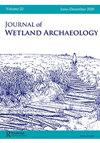Physical and Chemical Analyses of Sediments from around Star Carr as Indicators of Preservation
Q1 Arts and Humanities
引用次数: 7
Abstract
Abstract This paper presents results of a project focused on investigating the deterioration of organic sediments in the area adjacent to the Mesolithic site of Star Carr. Physical and geochemical analyses of sediment sequences from 15 boreholes have been used to assess preservation status and potential of the deposits. The results indicate that severe acidification as a result of chemical oxidation of sulphide to sulphate has occurred at various locations around the site. This has adversely affected the preservation potential of these sediments. The acidification is strongly associated with a well-developed iron-sulphur (Fe-S) zone within the archaeological sediments, and is closely linked to annually fluctuating water tables. In contrast, some sequences had constantly low water tables and were oxidised throughout, but others with perennially high ground water showed only modest acidification. This offers the possibility of at least some areas of the Mesolithic Star Carr palaeo-lake edge being better preserved, although perhaps vulnerable to changes in the hydrological regime.星卡尔附近沉积物的物理和化学分析作为保存指标
摘要本文介绍了一项研究Star Carr中石器时代遗址附近地区有机沉积物退化的项目的结果。对15个钻孔的沉积物序列进行了物理和地球化学分析,评价了矿床的保存状况和潜力。结果表明,由于硫化物化学氧化为硫酸盐,在场地周围的各个位置发生了严重的酸化。这对这些沉积物的保存潜力产生了不利影响。酸化与考古沉积物中发育良好的铁硫(Fe-S)带密切相关,并与每年波动的地下水位密切相关。相比之下,一些序列的地下水位一直很低,并且一直被氧化,而另一些序列的地下水位常年很高,只显示出适度的酸化。这提供了至少中石器时代Star Carr古湖边缘的一些地区被更好地保存的可能性,尽管可能容易受到水文制度变化的影响。
本文章由计算机程序翻译,如有差异,请以英文原文为准。
求助全文
约1分钟内获得全文
求助全文
来源期刊

Journal of Wetland Archaeology
Arts and Humanities-Archeology (arts and humanities)
CiteScore
1.40
自引率
0.00%
发文量
6
期刊介绍:
The Journal of Wetland Archaeology publishes a wide range of contributions in all fields of wetland archaeology. It includes scientific and methodological features, geoprospection, environmental reconstruction, wetland hydrology, cultural aspects of wetland archaeology, as well as conservation, site management, legislation, and site protection. All periods and all geographic regions are covered.
 求助内容:
求助内容: 应助结果提醒方式:
应助结果提醒方式:


